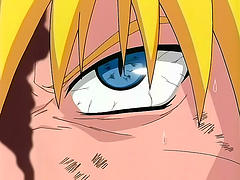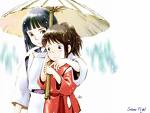Japanese Culture

Anime provides a glimpse of Japanese history mysticism, and culture.
It uses imagery to tell stories, providing a modern approach to mythology and ethics (or how to live).
Anime has become a major way to be introduced to Japanese culture.
It uses imagery to tell stories, providing a modern approach to mythology and ethics (or how to live).
Anime has become a major way to be introduced to Japanese culture.
When you are watching Anime you will see many fascinating Japanese cultural details, from shoji screens to Buddhist bells, to people taking off their shoes when entering a home.
You will feel the bittersweet sense of time passing indicated by a falling leaf or cherryblossom; and encounter the motivation to succeed, or do the right thing for your elderly parents, and an emphasis on feelings, and personal reactions.
Anime writers have an incredible skill in telling a story, producing exciting works which blend images and symbols with the storyline. In addition to over 200 episode series like Bleach, Naruto, and Reborn, most Anime series are between 12 and 26 episodes.
You will feel the bittersweet sense of time passing indicated by a falling leaf or cherryblossom; and encounter the motivation to succeed, or do the right thing for your elderly parents, and an emphasis on feelings, and personal reactions.
Anime writers have an incredible skill in telling a story, producing exciting works which blend images and symbols with the storyline. In addition to over 200 episode series like Bleach, Naruto, and Reborn, most Anime series are between 12 and 26 episodes.
Anime for language learning and cultural knowledge ~
from Natsuki Fukunaga “Those anime students”: Foreign language literacy development through Japanese popular culture, Journal of Adolescent & Adult Literacy; Nov2006, Vol. 50 Issue 3, p206-222,
"Afterwatching many anime shows in Japanese with English subtitles, Ted, Emily, and Sean told me that they became aware of several Japanese linguistic aspects such as male and female speech endings, tone of voice, formal and plain forms of speech, slang, and good or bad translation. Because most of the narratives in anime are conversational, students are exposed to slang and plain forms of speech that are not taught at the beginning level of Japanese classes. In Kareshi kanojo no jijo the change in speech is obvious because the main female character, Yukino, is an honor student at her middle school where she uses “proper” manners and polite speech, while she acts quite differently at home. Thus, viewers get some ideas of different speech types and mannerisms in Japanese society."
"Another important advantage that learners found from watching anime was increased Japanese cultural knowledge of nonverbal gestures, mannerisms, social settings and rules, families, meals, and homes. From Kareshi kanojo no jijo¯, Emily explained that she learned about Japanese school settings, juken jigoku (examination hell), ijime (bullying), and katei houmon (teacher’s home visit). Ted mentioned that some of his friends started playing Go, a Japanese board game that uses black and white stones, after watching Hikaru no go (Hikaru’s Go). There are countless examples of mannerisms in Japan such as bowing, using chopsticks, and taking shoes off at the genkan (entrance of the house). Ted and Sean told me how they developed visual images of how streets look in Japan with vendingmachines and konbini (24-hour convenience stores). Emily explained, 'In anime, you pick up the words, then go to class, you learn what the words mean, and go back to anime, ..to see them in context.... So basically, just like, you keep going back, the more you learn and more you can apply to anime.
from Natsuki Fukunaga “Those anime students”: Foreign language literacy development through Japanese popular culture, Journal of Adolescent & Adult Literacy; Nov2006, Vol. 50 Issue 3, p206-222,
"Afterwatching many anime shows in Japanese with English subtitles, Ted, Emily, and Sean told me that they became aware of several Japanese linguistic aspects such as male and female speech endings, tone of voice, formal and plain forms of speech, slang, and good or bad translation. Because most of the narratives in anime are conversational, students are exposed to slang and plain forms of speech that are not taught at the beginning level of Japanese classes. In Kareshi kanojo no jijo the change in speech is obvious because the main female character, Yukino, is an honor student at her middle school where she uses “proper” manners and polite speech, while she acts quite differently at home. Thus, viewers get some ideas of different speech types and mannerisms in Japanese society."
"Another important advantage that learners found from watching anime was increased Japanese cultural knowledge of nonverbal gestures, mannerisms, social settings and rules, families, meals, and homes. From Kareshi kanojo no jijo¯, Emily explained that she learned about Japanese school settings, juken jigoku (examination hell), ijime (bullying), and katei houmon (teacher’s home visit). Ted mentioned that some of his friends started playing Go, a Japanese board game that uses black and white stones, after watching Hikaru no go (Hikaru’s Go). There are countless examples of mannerisms in Japan such as bowing, using chopsticks, and taking shoes off at the genkan (entrance of the house). Ted and Sean told me how they developed visual images of how streets look in Japan with vendingmachines and konbini (24-hour convenience stores). Emily explained, 'In anime, you pick up the words, then go to class, you learn what the words mean, and go back to anime, ..to see them in context.... So basically, just like, you keep going back, the more you learn and more you can apply to anime.

